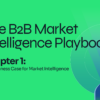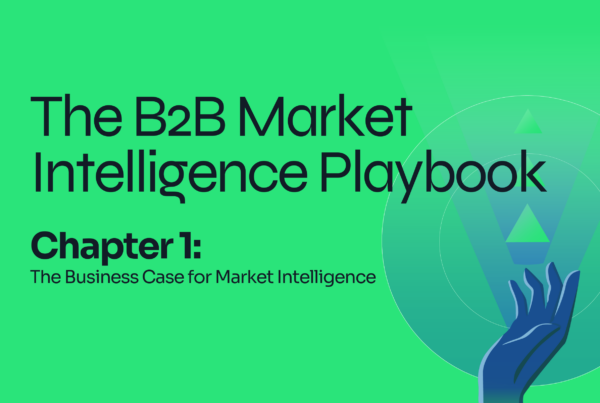
Like the Johari window, risk presents itself in four main frames – the ‘known known’, the ‘known unknown’, the ‘unknown unknown’ and the ‘unknown known’ risks. The application of the Johari’s window to risk, as popularised by the late US Secretary of Defence Donald Rumsfeld, serves as an excellent tool for helping institutions to improve their risk awareness. For the most part, institutions are good at identifying and planning around their known risks and appear resigned to the fate of their ‘known unknown’ risks. But, with present realities such as the COVID-19 pandemic and the emergence of horizon scanning methodology, institutions can now appreciate the importance of discovering and planning around the ‘known unknown’, the ‘unknown known’ and ‘unknown unknown’.
Horizon scanning is a process for detecting risks that a business or institution may encounter throughout its operations. Risks within the context of horizon scanning are not just negative situations, but situations with negative consequences, including missed opportunities or trends discovered too late. The efficacy of horizon scanning in a risk intelligence process is two-fold; one is its ability to be applied to specific and known areas of inquiry, second is in its service to general or exploratory inquiry processes to discover latent or unknown risk factors.
The three horizons framework for horizon scanning developed by Bill Sharpe and adopted to risk analysis assessed through the Johari’s window risk frameworks offers interesting insights on possible approaches that a horizon scanning methodology may embrace. According to Bill Sharpe, the three horizons are H1, H2 and H3. H1 is the temporal present and near future, which after careful assessment, yields the ‘known known’ risks. These risks are the apparent ones, easily surfaced by a robust context analysis tool like Political, Economic, Social, Technological, Legal and Environmental (PESTLE) or a Political Economy Analysis (PEA). The H1 horizon is at most times well understood, and most institutions have strategies for addressing the known realities and dynamics.
H2 horizon issues are transient and further down the timeframe than H1 issues. H2 represents the grey areas of your risk awareness, covering both the ‘known unknown’ and the ‘unknown known’. The ‘known unknowns’, the ones you know that you do not know, may also be captured by the above-mentioned context analysis tools but you are not able to determine their impact with certainty. The ‘unknown knowns’ are the risk factors you don’t know that you know, which may be in the form commonplace threats within the context of your business, whose risk factor you’re yet to establish. H2 issues may already be playing out in the present in the form of disruptions, emerging trends or new policy pronouncements whose implications are not yet defined.
H3 represents the mid to the long-term future in the arena of the ‘unknown unknown’. Most of the drivers in H3 are yet to fully take shape. The H3 horizon is useful for organisations that want to spot risk early and make adjustments to avoid rather than deal with the consequences of being caught up in risk. However, the signals in this area are weak, unexpected and are at times seemingly irrelevant.
A horizon scanning methodology is able to surface risk factors across the four panes, and support conclusions for determining the preparedness of an institution to survive or benefit from identified risks. For the most part, horizon scanning is expert-driven. It is subject matter experts who are able to identify issues that are out of step with the industry and are likely to emerge as threats, trends or opportunities. The methodology entails three main steps, the first is the information gathering, the second is defining a format for capturing data which may be institutionalised in the form of a template. The third step is an elaborate process for drawing insights from the data collected and recorded which are then collated and submitted to decision makers for possible action.
Information Gathering
Information gathering, as the name suggests, entails scanning for information with unique insights or viable foresights of your area of inquiry. The information may be gathered from news, blog, journals, expert commentaries posted on social media platforms or undocumented conversations. Interviews and problem trees may also be useful in discovering areas of specific or general inquiry to serve as points for information gathering.
Working with experts provides a certain level of assurance that the individual will be able to identify peripheral issues whose ripple effects may affect your industry or subject of inquiry. Noting that the ‘unknown unknown’ factors are presented by weak signals, emphasis should be given to scanners to record the unexpected or seemingly irrelevant information gathered at this stage.
Consistent Capture of Information
Alongside information gathering is the process of documenting the discoveries emerging from the scanning process. An institutionalised documentation template, helps standardise the approach taken to reflect on the scanned information and the aspects that are recorded for insight development.
As the reflection is captured, the institution should provide a way to store the original form of documents, blogs, and news articles for future reference. It may or may not be that high impact factors correspond to the known, H1 horizon while low impact factors correspond to the ‘unknown unknown’ H3 horizon.
Insight Development
It is at this level that the unknowns in your risk framework are likely to emerge. Each scan documentation from step two should be shared with the participants of the workshop. The workshop discussions should surface insights and discoveries as the scanning experts knowledge will be useful for broadening the scope of the discoveries made, participants should then discuss the impact according to a specific horizon and document which insights are important and relevant to the subject matter of the inquiry. The synthesis from the workshop should then categorise the weight of the impact as either low, medium or high, and participants should then assign a time horizon indicating a probable timeframe when the impact will likely manifest. The outputs from the exercise should be a basis for evidence-based decision-making, potentially informing corporate policy, product development and other strategic actions taken by the leadership.
A horizon scanning methodology is applied in either continuous, regular or ad hoc basis. Continuous means process entails initiating a new scanning process at the conclusion of another. Regular horizon scanning is done at regular intervals including quarterly, annually or as determined. Ad hoc scanning is usually done when, as the name suggests, impromptu at the emergence of an issue, situation or phenomenon from which an institution may benefit if it inquired.
With the rate of change and disruption in the world today, technology such as artificial intelligence can play a crucial role in amplifying the efficiency of horizon scanning methodologies. The use of AI means that teams can deal with vast scales of information and discover unexpected insights from especially weak signals.
AMPLYFI has used its expertise in natural language processing and machine learning to create platforms that read and understand millions of open-source documents from the internet. Our deep-learning AI techniques mine unstructured data and extract insights from across news, academic journals and patents. In real-time, AMPLYFI’s customers can discover landscapes, the major players associated with developments and where in the world is leading the way. Our technology is built with collaboration in mind; individuals can discover trends and share with their teams, enabling them to build impactful insights for decision-makers.









